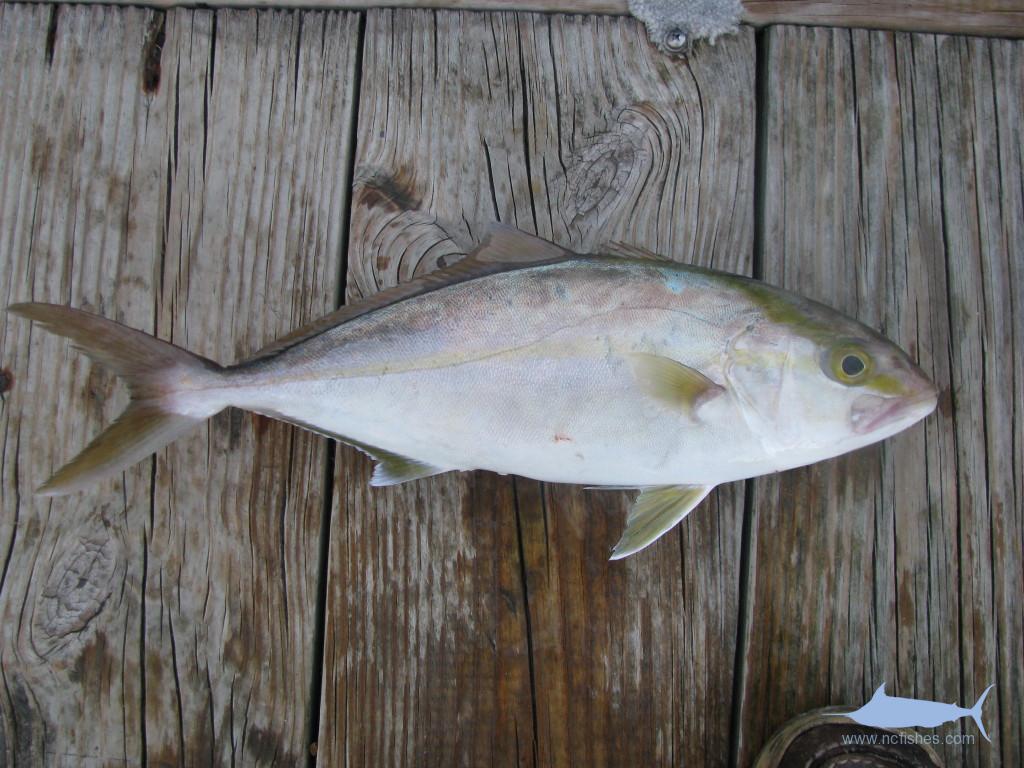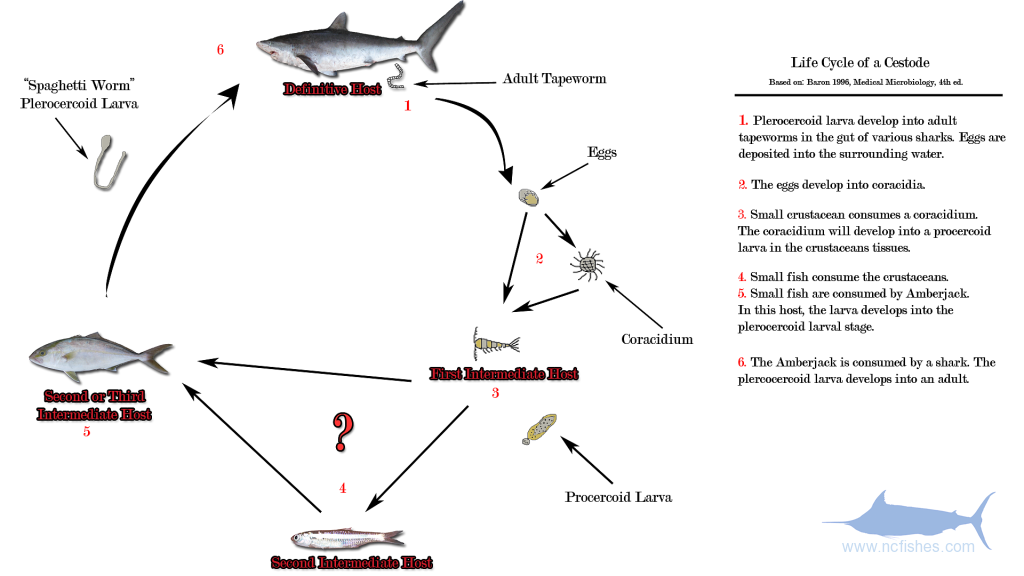
What is an Amberjack Worm?
Amberjack, often to an angler’s dismay, are frequently riddled with infestations of long, thin, white worms with the consistency of cooked spaghetti. Often called “spaghetti worms”, these worms are a specific life stage of tapeworms that can be found embedded in the muscle of just about every specimen of banded rudderfish, greater amberjack, and almaco jack caught in North Carolina.

Tapeworms are not closely related to your everyday segmented earthworms of the phylum Annelida. Instead, they belong to the phylum Platyhelminthes, which consists of unsegmented flatworms. Flatworms are known as such because they are what we call acoelomates, meaning they have no body cavity. Tapeworms also lack a digestive tract, and instead are able to absorb carbohydrates directly from their host, which is what allows them to live as internal parasites.

Amberjack worms have the potential to be any number of similar tapeworm species and are all but impossible to identify to that level with the naked eye. Much of the difficulty in identification comes down to our inability to see structures around the head of the animal without the aid of a microscope. This difficulty is compounded due to the fact that sometimes tapeworms can accidentally infect the wrong host, so we cannot rule out the species based on the host alone. For the purposes of this article, we will consider the worms as an order, the trypanorhyncha, which includes many families of fish infecting tapeworms. When speaking of the “spaghetti worm” stage of the animal’s life cycle, we will specifically refer to the worms as a trypanoryhnca plerocerci for reasons that will become clear in the next section.
Amberjack Worm Life Cycle

The amberjack worms begin their life cycle as eggs inside a segment of the adult tapeworm, inside the digestive tract of a shark. These eggs are then broadcast into the water via the shark’s feces. The eggs will hatch and continue to mature into a coracidium larva. If the worm is lucky, small crustaceans will then feed on the coracidium, at which point a transformation into the second larval stage takes place. Now known as a procercoid larva, the worm lives inside the crustacean until fed upon by a fish. It is at this stage that the cycle gets a bit murky. Amberjack do not feed on small crustaceans, and even if they did, juvenile amberjack are rarely found with these tapeworms. Something else must be going on here, and one obvious solution is that smaller fish, such as the depicted anchovy, consume the crustaceans, and are then fed upon by the amberjack. Many species of tapeworm that infect sharks rely on bony fishes as their intermediate hosts to work as an entry vehicle into the sharks digestive system. Once inside the amberjack, the worm will once again undergo a transformation into the third stage known as the plerocercoid larva stage. It is this stage that we refer to as “spaghetti worms”.

The trypanorhynch plerocercoid will now stay put and grow inside the amberjack for a number of years, waiting for their opportunity to be consumed by a shark. If this occurs, the worm will attach to the intestines of the shark, and mature into an adult tapeworm to repeat the cycle.

Dangers to Humans
Usually, anglers and fish cleaners will remove the worm by grabbing it between the backside of a knife and their thumb, and pulling the worm out. Although they frequently ruin the aesthetics of your fillets, spaghetti worms are, on the whole, quite harmless. However, as we mentioned earlier, there could be any number of species present in your fish, and identifying them is generally out of our reach. With that said, there are a few known tapeworms that can, and do, infect humans who eat raw or undercooked fish. Even though these infections are rare in North America, they do happen. Although the trypanorhynch plerocerci most commonly found in amberjack are not a threat to humans, cooking your fish thoroughly, or freezing it, will kill any other possibly infectious tapeworms, and render your fish safe to eat.

For more information please see:
http://www.cdc.gov/parasites/diphyllobothrium/
Thanks, I think I’m just going to stop eating, 😆
The veteran fish cleaning guy at the dock said the worms are not dangerous, looks like this website confirmed that fact.
I will be careful to remove any worms in the fish, cut out major infestation…
And continue to enjoy eating fresh Amber Jack from the ocean.
No